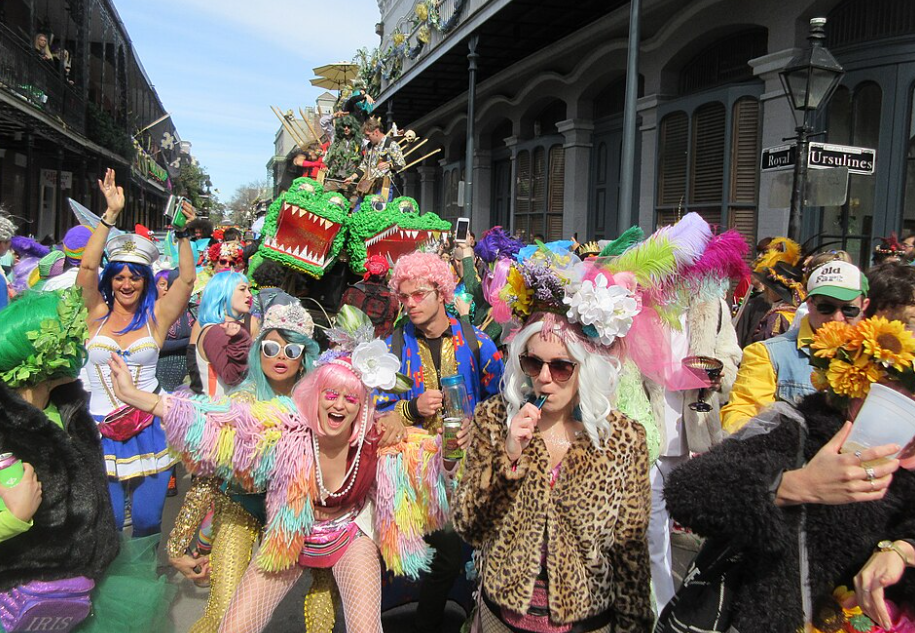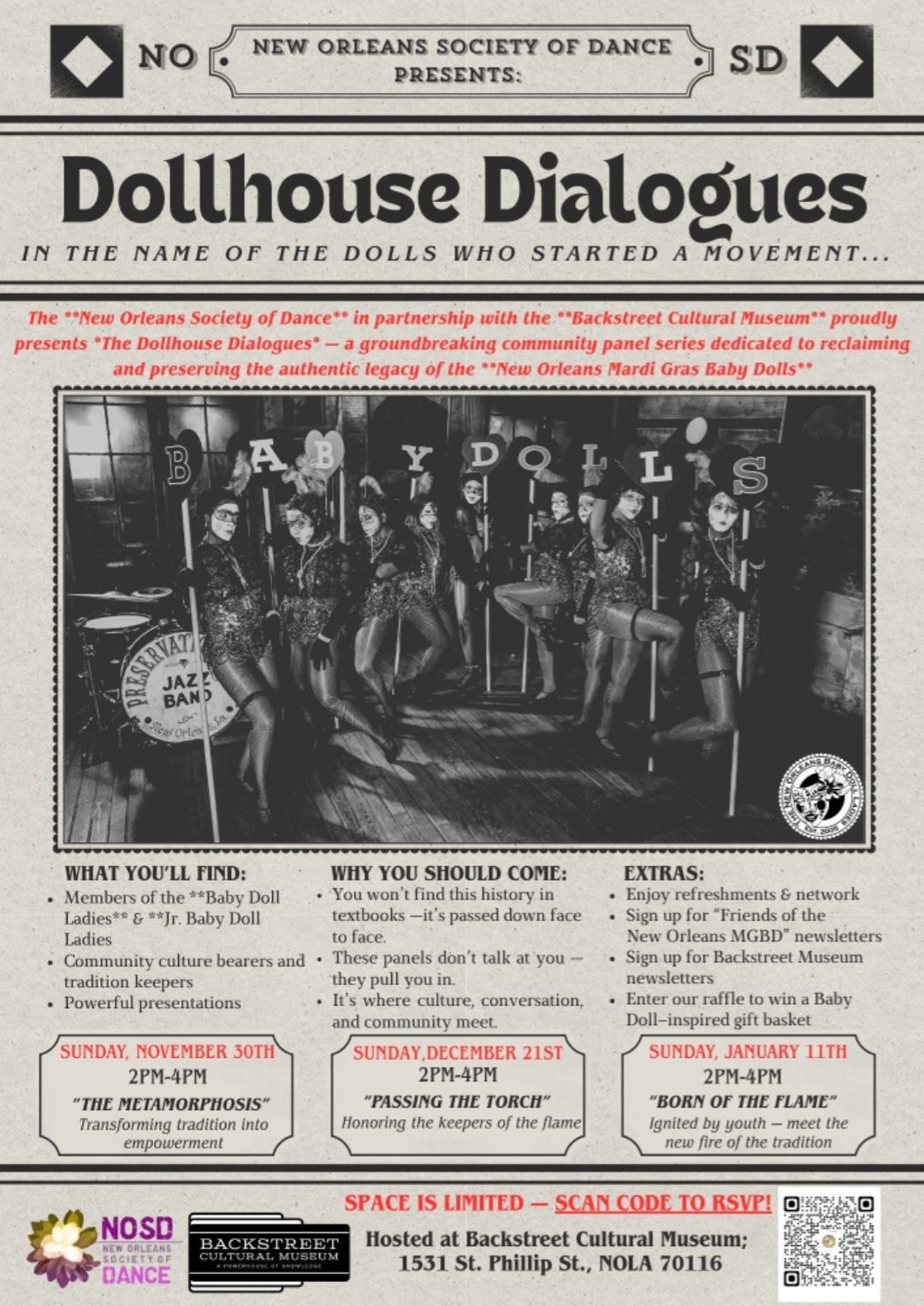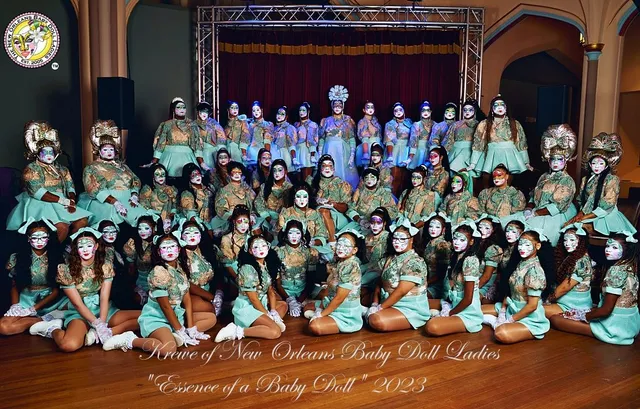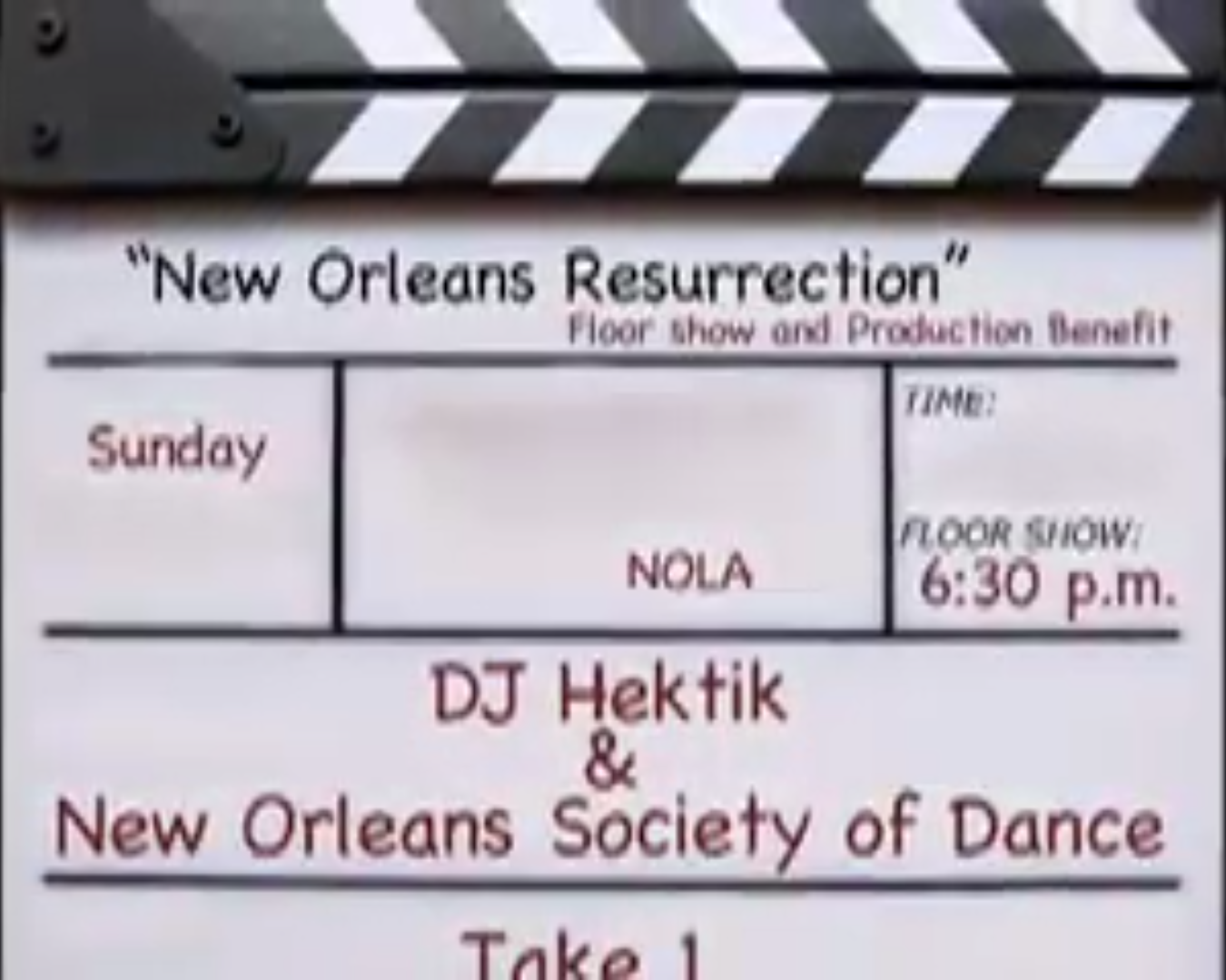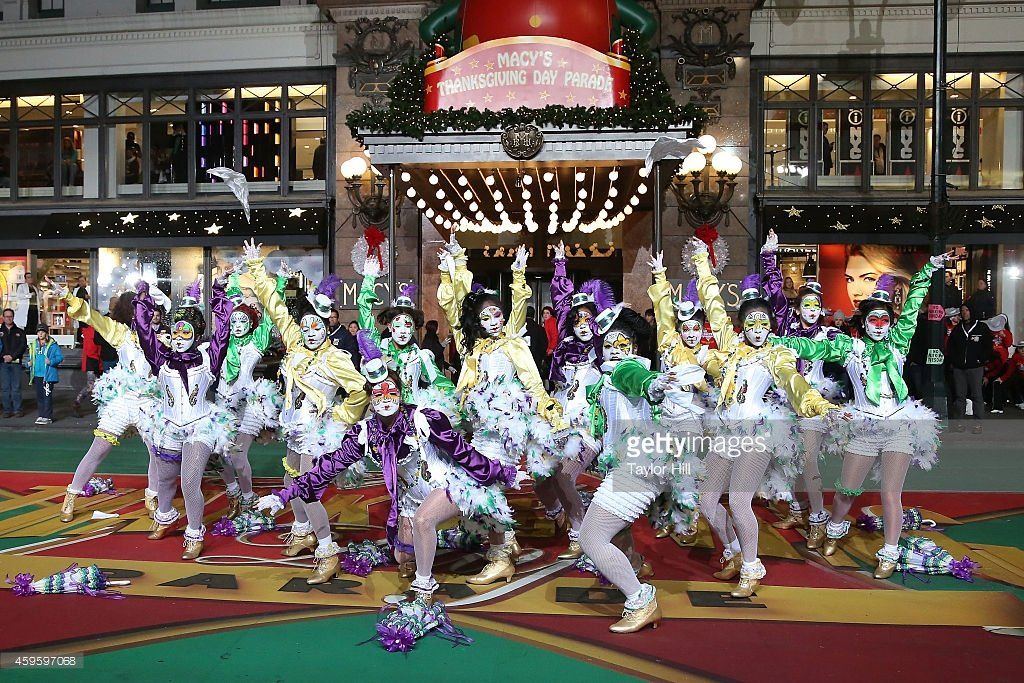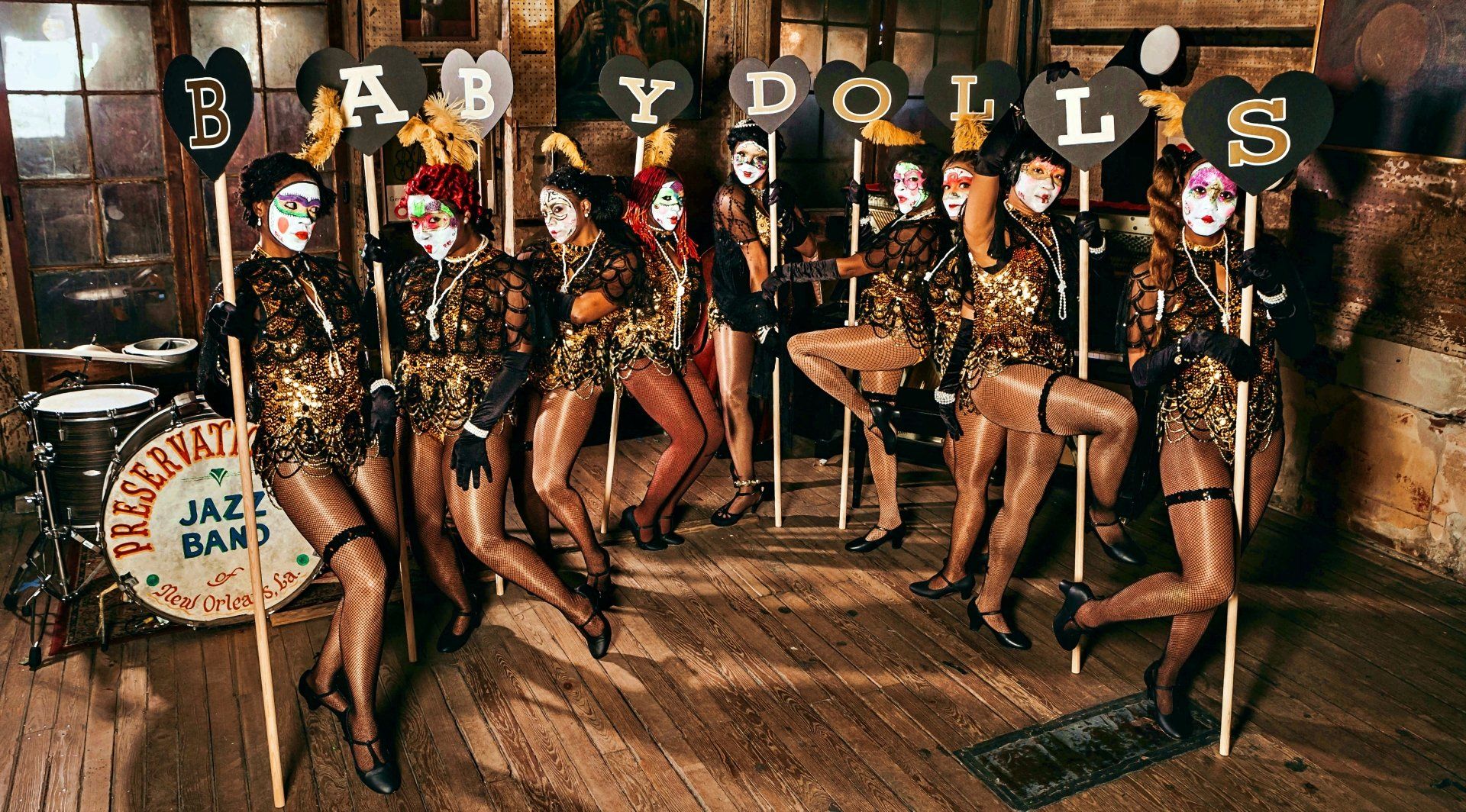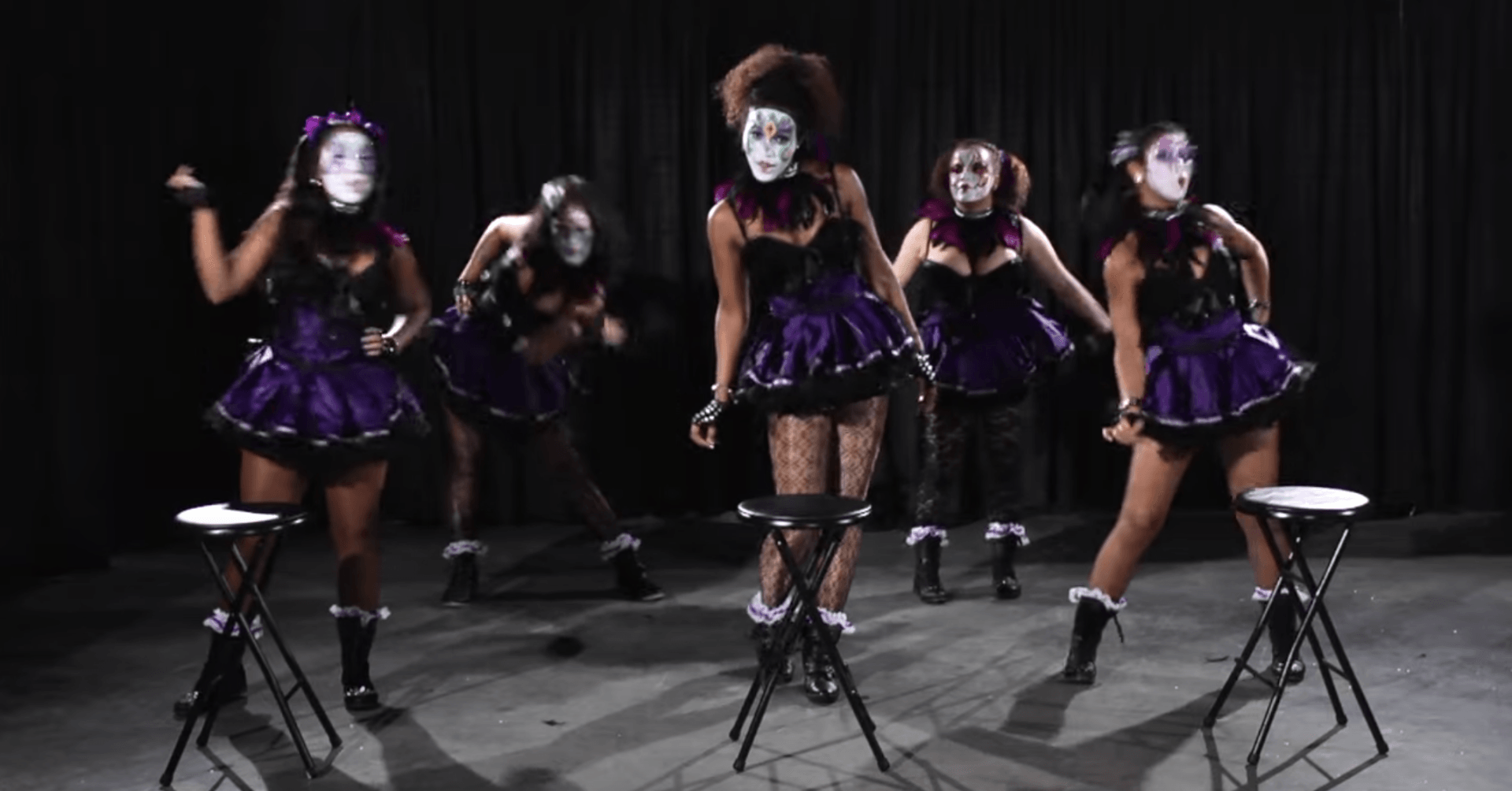Behind the Mask: Keepers of New Orleans Doll-Masking & Jazz Dance Legacy
The New Orleans Baby Doll Ladies are so excited take part as mentors for this year's "Level Up" sessions, a mentor/mentee cohort for young girls ages 8-17. To register HERE for the leadership program.
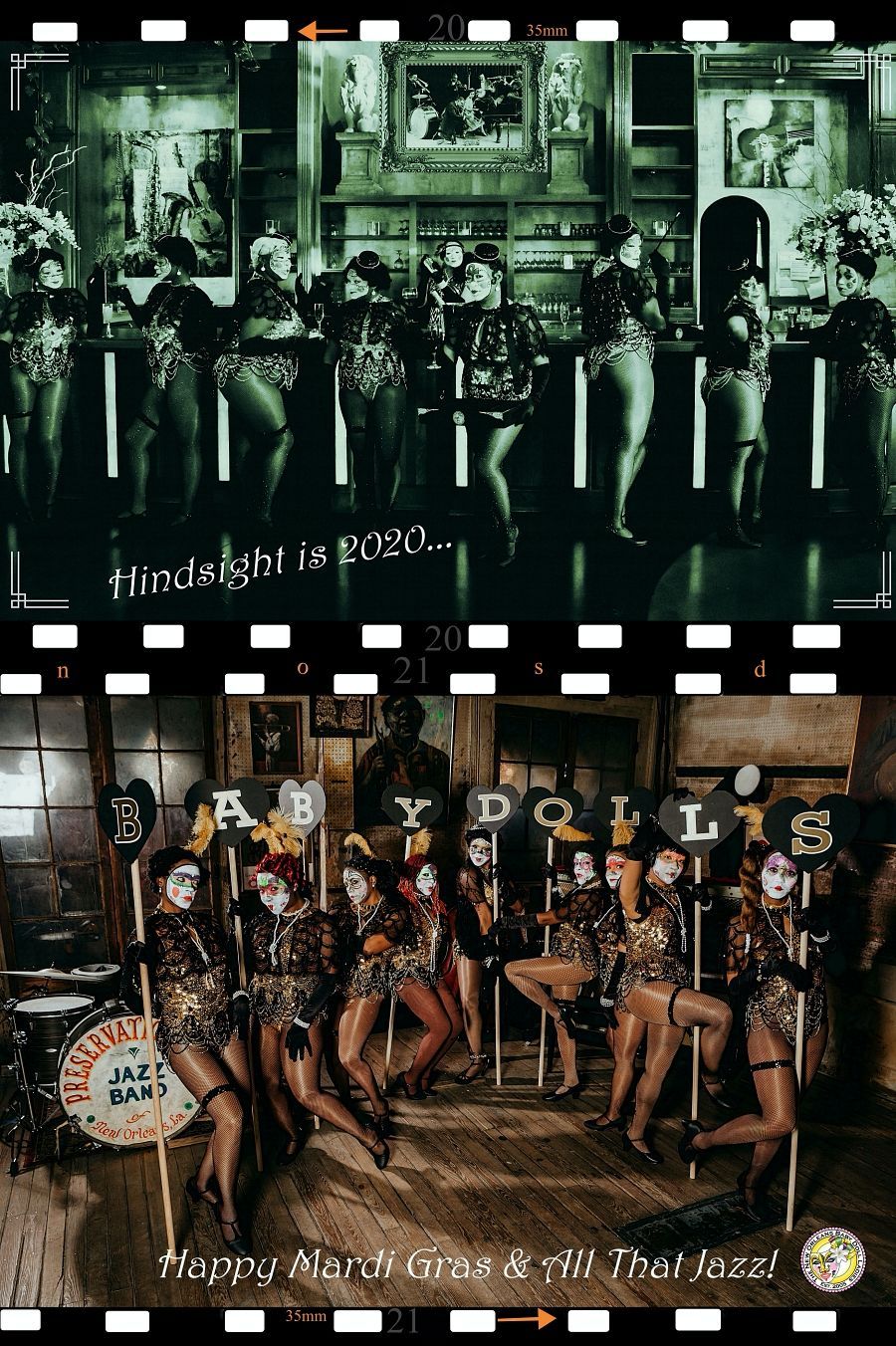
In the heart of New Orleans, where tradition dances with innovation, a vibrant art form has continued to thrive behind layers of satin, sequins, and soulful rhythm—New Orleans doll masking. Deeply rooted in African American heritage and local folklore, doll-mask dance traditions are more than performance—they are living legacies.
A Cultural Legacy in Motion
The city of New Orleans is globally recognized for its music, Mardi Gras parades, and cultural diversity. Yet, nestled within these grand festivities lies a more clandestine form of expression: the doll-masking and Jazz dance tradition. Characterized by Baby Doll Ladies, who are dancers adorned in ornate doll-like masks and elaborate costuming, this tradition evokes mystique, performance art, and historical reverence.
These masked dancers don’t merely entertain—they tell stories through movement, preserving identities and histories that mainstream narratives often overlook. Whether as a Mardi Gras masking krewe or intimate stage ensemble, The New Orleans Society of Dance Baby Doll Ladies find a unique voice in this powerful form.
Origins of Doll-Masking in New Orleans
Dance has always been instrumental to the metamorphosis of New Orleans' early days of the "Jass," and is the most prominent feature of the "Baby Dolls" phenomena of those times (Ca.1912).
The origins of New Orleans’ doll-masquerading traditions trace back to the early Jass Days.Scholarly research notes that the first women's “street masking” practice in the United States occurred On Mardi Gras Day, In 1912 by a group of free spirited women from the black vice district in New Orleans, personified the baby doll image dressed in toy-dollish regalia, as they paraded up and down the main street car line. The jazz players and bad boys typically from the South, commonly used terms like doll, doll eyes baby and babydoll in the jazz culture as an endearing connotation for a lady that he’s attracted to; it was all over the most popular tunes of the times, including:
• 1912 “Oh You Beautiful Doll”, American Quartet & Billy Murray
• 1916 “Pretty Baby”, Tony Jackson
• 1923 “Sweet Baby Doll”, King Oliver’s Creole Band feat. Louis Armstrong & Johnny Dodds
• 1932 “EVerybody Loves My Baby”, Boswell Sisters
• 1944 “Is You Is Or Is You Ain’t My Baby”, Nat King Cole
As these influences merged, a uniquely New Orleans tradition emerged—one that utilized the baby doll identity not just as ornamentation but as a symbol of empowerment, anonymity, and transformation.
The Symbolism Behind the Baby Doll Ladies Mask
The New Orleans Baby Doll Ladies are the only doll-masking ensemble to use canvassed face masks—a signature element that goes far beyond visual spectacle. Each intricately painted design carries symbolic meaning, transforming the dancer into an abstract persona and offering a powerful avenue for creative expression.
• Femininity and Power: Styled in hyper-feminine aesthetics, the Baby Doll Ladies' masks celebrate womanhood while reclaiming autonomy through artful self-representation.
• Mystique: The designs, colors, and placements of each mask are intentionally coded with hidden meanings, inviting audiences into a space of curiosity, reflection, and reverence.
• Innovation: These character-driven performances redefine the traditional “toy-doll” image, presenting a bold, contemporary evolution of the Baby Doll archetype.
The Role of the New Orleans Society of Dance
At the forefront of preserving and reimagining a vital cultural tradition, the New Orleans Society of Dance (NOSD) stands as both a premier dance production company and a cultural preservationist society. As the leading successor to this once-dormant art form, NOSD has revitalized historic doll-masquerading for modern audiences—infusing it with aesthetic excellence and deep purpose.
Through the Baby Doll Ladies’ annual Mardi Gras dance-parade, clandestine performances, and robust community outreach, the society merges tradition with innovation. Their signature elements—ornately painted faces, elegant choreography, avant-garde staging, and narrative-driven performances—highlight the beauty, power, and cultural resonance of this unique art form.
What Makes NOSD’s Masking Krewe of Baby Doll Ladies Unique?
By highlighting the essential role of dance, the Baby Doll Ladies Dance-Parade—along with NOSD’s year-round productions and programs—seeks to present the doll-masking tradition within its proper historical context. These efforts aim to restore its rightful place in cultural history, rescuing the tradition from stereotyping, invisibility, and obscurity.
The New Orleans Baby Doll Ladies are not simply entertainment—they offer educational, emotional, and immersive experiences that connect the present to the past.
• Cultural Practitioners: As the primary successor of the Original Baby Dolls (circa 1930), the Baby Doll Ladies are the only all-women’s walking krewe to parade along the historic St. Charles Avenue route on Mardi Gras Day. With an arts-integrated teaching mission, an official induction process, and a structured mentee cohort, they are deeply committed to preserving, promoting, and passing on this rich cultural legacy to the next generation.
• Performance Artists: As a community-centered dance company founded in 2005, the New Orleans Society of Dance identifies, develops, and enriches burgeoning performing artists while embodying and exposing the cultural footprint of women's folk arts in Louisiana.
• Chosen Keepers: The Baby Doll Ladies are the chosen keepers of heirloom artifacts passed down from the descendants of various baby doll pioneers such as New Orleans’ beloved music and dance family—the Original Baby Dolls (c. 1930). This legacy includes the revered Aunt Miriam Batiste-Reed and her late brother, musician Uncle Lionel Batiste. Through their stewardship, the Baby Doll Ladies honor and carry forward the family’s values and contributions to the doll-masking tradition.
• Historic Preservationists: As the official historic preservationist organization of the Mardi Gras doll-masking tradition, the New Orleans Society of Dance serves as Louisiana’s most comprehensive source and primary steward of artifacts dedicated to safeguarding this anthropologically at-risk cultural practice.
Keeping the Tradition Alive
While many cultural art forms face erosion in the face of commercialization, the doll-masking tradition are experiencing a revival, buoyed by The New Orleans Society of Dance Resurrection of the Baby Doll Ladies in 2005. Their dedication to:
• Educating the public through workshops and performances
• Supporting emerging artists within the community
• Creating space for Black and Brown creatives to thrive
…all of which solidifies The New Orleans Society of Dance Baby Doll Lafies as premier torchbearers of this artistic legacy.
Visit New Orleans Society of Dance to explore upcoming shows, learn about their mission, and support local artistry.
Events and Performances: A Sneak Peek
The Society’s calendar includes both private events and public stage productions. Each performance is curated with detail and purpose. From mysterious, moonlit events to grand stage spectacles, their presentations never fail to mesmerize.
NOSD’s signature doll-masking productions include:
• “The New Orleans Baby Doll Ladies Dance Parade” – The culmination of a season of work ends with the Mardi Gras Dance parade.
• “The New Orleans Society of Dance Philanthropic Soiree’” – An event to celebrate and support its youth programs and junior doll division, which align with the dance company’s mission to enrich and empower the lives of girls and women through cultural, performance and visual arts.
Be sure to check their site for upcoming New Orleans Society of Dance events.
Whether at a festival or a private event, if they’re not parading during their annual Dance-Parade, you’ll find these captivating ladies lighting up the stage!
Be sure to check www.babydollladies.com www.neworleanssocietyofdance.com and the local listings when in New Orleans.
Credits & Honors:
! Baby Doll Ladies Annual Mardi Gras Dance-Parade ( 2020 -2016 ): In cooperation
with the City of New Orleans Office of Economic Preservation, every Fat Tuesday, the
New Orleans Society of Dance Baby Doll Ladies achieves the culminating goal of
celebrating women of excellence across neighborhoods highlighting them in the Baby
Doll Ladies Mardi Gras Dance-Parade, the only one of its kind in the Crescent City.
! National Geographic On Demand : Secrets of New Orleans (2018) – T.V. Special
showcases some of the best when local storytellers reveal the secrets of what unfolds
behind its courtyard walls and ornate facades.
! New Orleans Jazz & Heritage Festival : Economy Hall Tent (2017/18); Kids Tent
(2017/18); Alison Miner Stage (2012); Congo Square Stage (2009)
! The Wall Street Journal, Cover Photo by Dan Anderson/ European Press photo
Agency. It Was Fat Tuesday in New Orleans, Elsewhere It Was Just Tuesday
(Wednesday, March 1, 2017 – VOL. CCLXIX NO. 48)
! Delta Sigma Theta, Inc. Artie (Dance) Award Recipient (New Orleans Chapter;
2016)
! Macys Thanksgiving Day Parade (2014)
! CNN.com A modern celebration of African-American history by Shaina Negron
(Friday, February 8, 2013)
! ‘ Oh! Those Baby Doll Ladies’ Cabaret (2013–Present)
! Louisiana State Museum Baby Dolls exhibit: Millisia White, co-curator; New Orleans
Society of Dance, LLC, co-sponsor, in tandem with the Louisiana State Museum
Foundation and Friends of the Cabildo (2012–13)
A Final Word: Preserving the Spirit Behind the Mask
In an ever-changing world, traditions like doll masking remind us of the beauty of resilience, expression, and shared cultural memory. These character-dancers carry the weight of history and the future in every twirl, mask, and stage entrance—inviting audiences to witness not just a performance, but a living archive of Louisiana's rich heritage.
Whether you're a local seeking reconnection or a visitor curious about New Orleans’ cultural depth, exploring The Baby Doll Ladies’ doll-masking and dance traditions offers an unforgettable journey behind the mask—and into the soul of the city.
Explore the legacy. Support the movement. Join the New Orleans Society of Dance as they continue to honor, uplift, and perform the rhythms of New Orleans past and present.
Frequently Asked Questions (FAQs)
What is the New Orleans Baby Doll Ladies tradition?
Rooted in the rich traditions of masquerade and dance, the New Orleans Baby Doll Ladies wear symbolic face designs and themed regalia—often paired with matching props—to express identity, celebrate heritage, and tell powerful stories through movement.
How did the doll-masquerading and Jazz dance traditions begin?
1912 by a group of free spirited women from the black vice district in New Orleans, who personified the baby doll image dressed in toy-dollish regalia, as they paraded up and down the main street car line.
Why Do the Baby Doll Ladies wear face-painted masks?
The New Orleans Baby Doll Ladies wear masks to embody their symbolic identities, offering both freedom of expression and the power of anonymity.
Where can I see the New Orleans Baby Doll Ladies?
The Baby Doll Ladies carry forward a vibrant and essential part of Mardi Gras tradition—but their presence extends far beyond the parade. With elaborately face-painted character dancers and a cabaret-style ensemble, the group delivers empowering performances that blend loose skits, chants, and dynamic choreography. Their shows feature original music fused with mainstream R&B, hip-hop, and New Orleans bounce—an energetic, call-and-response style of local hip-hop.
